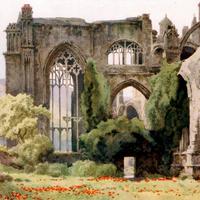Papers by Mario Loffredo

Quanto la storiografia italiana-e in particolare italomeridionale-dedicata ai capitoli cattedrali... more Quanto la storiografia italiana-e in particolare italomeridionale-dedicata ai capitoli cattedrali differisca da quella di altri Paesi europei, per motivi anche congeniti alla natura e alla disponibilità di fonti pervenute, è fatto ben noto e sul quale non mi soffermerò 1. Parimenti, non indugerò sulla natura specifica del Capitolo, connaturata da una accentuata secularitas 2 , e su come l'accesso al canonicato costituisse un'affermazione di ascesa sociale e, ancor di più, di conservazione di status 3. Lo studio dedicato a un capitolo cattedrale non può che prendere le mosse da una considerazione generale sullo stato delle fonti. Benché il Capitolo di Salerno presenti in proposito una situazione privilegiata rispetto ad altri collegi secolari dell'Italia meridionale 4 , la documentazione circostanziata è, da un punto di vista quantitativo, indubbiamente poco consistente, almeno fino al XIII secolo. Ciò rende disagevole scendere nei dettagli della struttura, del patrimonio e delle personalità del collegio capitolare, con i conseguenti disagi, difficoltà e, diciamolo, anche una certa frustrazione indotta nello studioso, il quale si trova di fronte un mosaico in cui molte tessere mancano o non combaciano perfettamente le une con le altre. Ciò, tuttavia, non inficia la visione del quadro generale, che si può delineare anche grazie al supporto di fonti più tarde e al
SHARE Libri, May 31, 2021
[Italiano]: Il volume raccoglie i nove contributi presentati da giovani studiosi medievisti in oc... more [Italiano]: Il volume raccoglie i nove contributi presentati da giovani studiosi medievisti in occasione della Giornata di Studi Il Regno. Societa, culture, poteri (secc. XIII-XV), svoltasi l’8 maggio 2019 presso l’aula conferenze DiSPaC dell’Universita degli studi di Salerno./[English]: The book collects the nine papers presented by young scholars of Southern Italian Middle Ages on the occasion of the Giornata di Studi The Regnum. Society, cultures, powers (XIII-XV centuries), held on May 8, 2019 at the Aula conferenze DiSPaC of University of Salerno.
This paper focuses upon the Cathedral Chapter of Salerno, from the first attestations (10th-11th ... more This paper focuses upon the Cathedral Chapter of Salerno, from the first attestations (10th-11th century), till the end of the Middle Age. Furthermore, this study deepens into peculiar aspects of the 16th and 17th century, enlightening the phenomenon and the importance of the college of clerics and its effect on the city life of Salerno. Besides, an analysis of the formation and recognition of the chapter’s records is offered, together with the role that the college played within the society and the Church of Salerno, eventually pointing to the transformations entailed by the historical transition to the Modern Age.

Mélanges de l'École française de Rome - Moyen Âge, 133 - 1
This paper aims to shed a light on of the complex Cistercian tax collection system, which was est... more This paper aims to shed a light on of the complex Cistercian tax collection system, which was established in a formal and settled way since the 13th century. The abbeys, indeed, were required to pay taxes to the General Chapter. The contributions became necessary because of the great expansion of the Cistercian monasteries. Moreover, the Order had to meet the frequent payment requests made by sovereigns and the papacy. Therefore, the dynamics inherent in the structuring of the various contributions requested will be illustrated, highlighting the sources that provide fiscal data. The study will mostly focus on the taxes imposed on the abbey of S. Maria del Sagittario, in Basilicata Region. The essay is based on the data provided by the taxes’ registers that were used at the Order, the local documents, and the contributions imposed by the Apostolic Camera.
Il Regno. Società, culture, poteri (secc. XIII-XV). Atti della Giornata di Studi, Università degli Studi di Salerno, 8 maggio 2019, a cura di M. Loffredo - A. Tagliente, Università degli Studi di Salerno 2021 (Schola Salernitana, E-book. Studi e testi 2 [15]), pp. 27-47
The paper analyzes the reasons that led Charles I to entrust the two monastic foundations of S. M... more The paper analyzes the reasons that led Charles I to entrust the two monastic foundations of S. Maria di Realvalle and S. Maria della Vittoria to the monks of the Cistercian Order. The relational dynamics between the Cistercians and the Capetian dynasty will be subsequently examined, along with the negotiations between the Order, the Papacy and Charles to determine the payment from the French monasteries for the Angevin campaign of conquest, and the lack of support of Transalpines to the communities founded by Charles.
Le diocesi dell'Italia meridionale nel Medioevo. Richerche di storia, archeologia, storia dell'arte, 2019
Schola Salernitana. Annali , 2018
This paper focuses upon the Cathedral Chapter of Salerno, from the first attestations (10th-11th ... more This paper focuses upon the Cathedral Chapter of Salerno, from the first attestations (10th-11th century), till the end of the Middle Age. Furthermore, this study deepens into peculiar aspects of the 16th and 17th century, enlightening the phenomenon and the importance of the college of clerics and its effect on the city life of Salerno. Besides, an analysis of the formation and recognition of the chapter's records is offered, together with the role that the college played within the society and the Church of Salerno, eventually pointing to the transformations entailed by the historical transition to the Modern Age.
Finito di stampare nel mese di Maggio 2019 presso Etabeta-ps in Lesmo (MB) È vietata la produzion... more Finito di stampare nel mese di Maggio 2019 presso Etabeta-ps in Lesmo (MB) È vietata la produzione, totale o parziale, con qualsiasi mezzo e per qualsiasi utilizzo, anche ad uso didattico, se non autorizzata in forma scritta dal Curatore
sito internet: www.lavegliacarlone.it Riservati tutti i diritti, anche di traduzione, in Italia e... more sito internet: www.lavegliacarlone.it Riservati tutti i diritti, anche di traduzione, in Italia e all'estero. Nessuna parte può essere riprodotta (fotocopia, microfilm o altro mezzo) senza l'autorizzazione scritta dell'Editore Stampato nel mese di gennaio 2016 da Printì -Manocalzati (Av) PRESENZE SLAVE IN ITALIA MERIDIONALE (SECOLI VI-XI)
Book Reviews by Mario Loffredo
Schola Salernitana. Annali, XXVIII, 2023
Schola Salernitana, 25, 2020
Talks by Mario Loffredo











Uploads
Papers by Mario Loffredo
Book Reviews by Mario Loffredo
Talks by Mario Loffredo
Volume disponibile qui:
https://www.nuovomedioevo.it/attivita-2/1466-2/
For a better understanding of the different issues, specialists from various disciplines engage in a constructive dialogue to investigate the peculiarities of the Breviary-Missal, explore its complexities, and retrace the multiple routes that connected Salerno to Rome, the Mediterranean basin, and the heart of medieval Europe.
La straordinaria scoperta presso il Museo Leone di Vercelli di un Breviario-Messale proveniente da Salerno ha portato alla luce il più antico testimone noto della liturgia cittadina, databile agli anni dell’arcivescovo Romualdo II Guarna (1153-1181). Il manoscritto si aggiunge al gruppo dei codici conservati presso il Museo Diocesano “San Matteo” della città costiera e trasmette numerose e inedite informazioni codicologiche, musicologiche e storico-artistiche. Dalle pagine del manoscritto emergono gli innesti della tradizione beneventana, ambrosiana e normanna sulle consuetudini della Chiesa salernitana, così come nuove domande sul poliedrico contesto culturale medievale, in cui la parola scritta, pronunciata e cantata si associava alle immagini e agli arredi sacri della cattedrale. Per una migliore comprensione delle diverse questioni sono stati coinvolti in un dialogo costruttivo specialisti di varie discipline che, in questo volume, indagano le peculiarità del Breviario-Messale, scandagliandone la complessità e ripercorrendo le molteplici vie che connettono Salerno a Roma, alle sponde del Mediterraneo e al cuore dell’Europa.